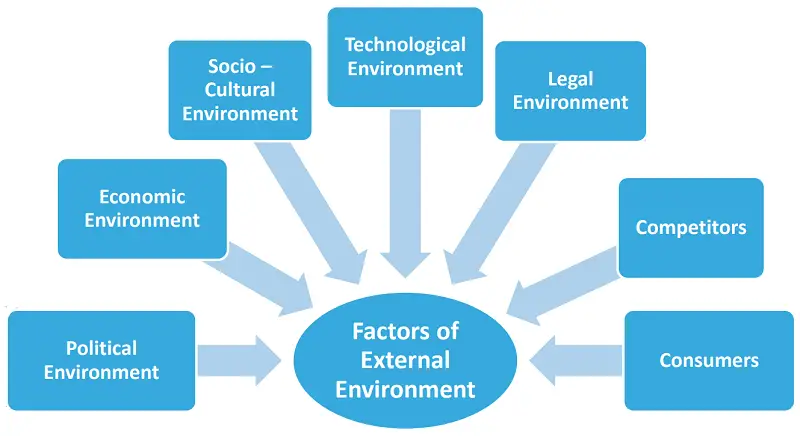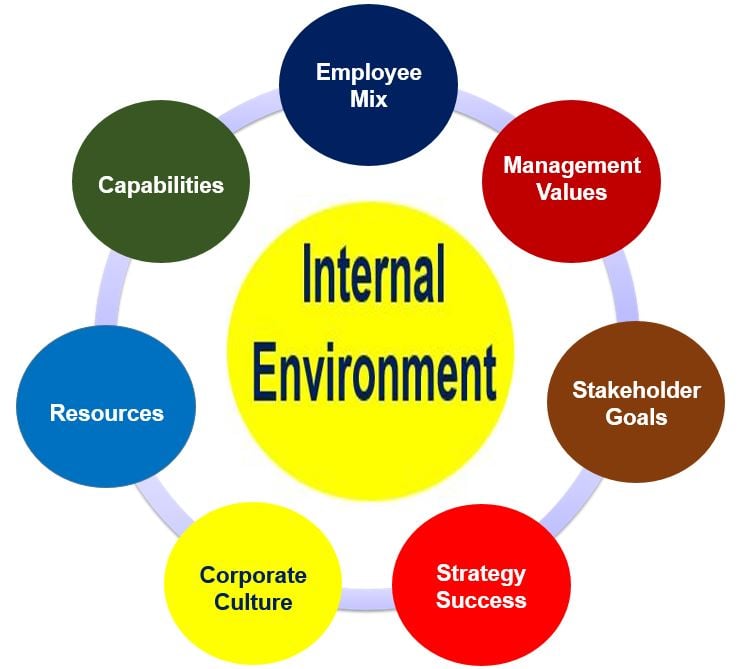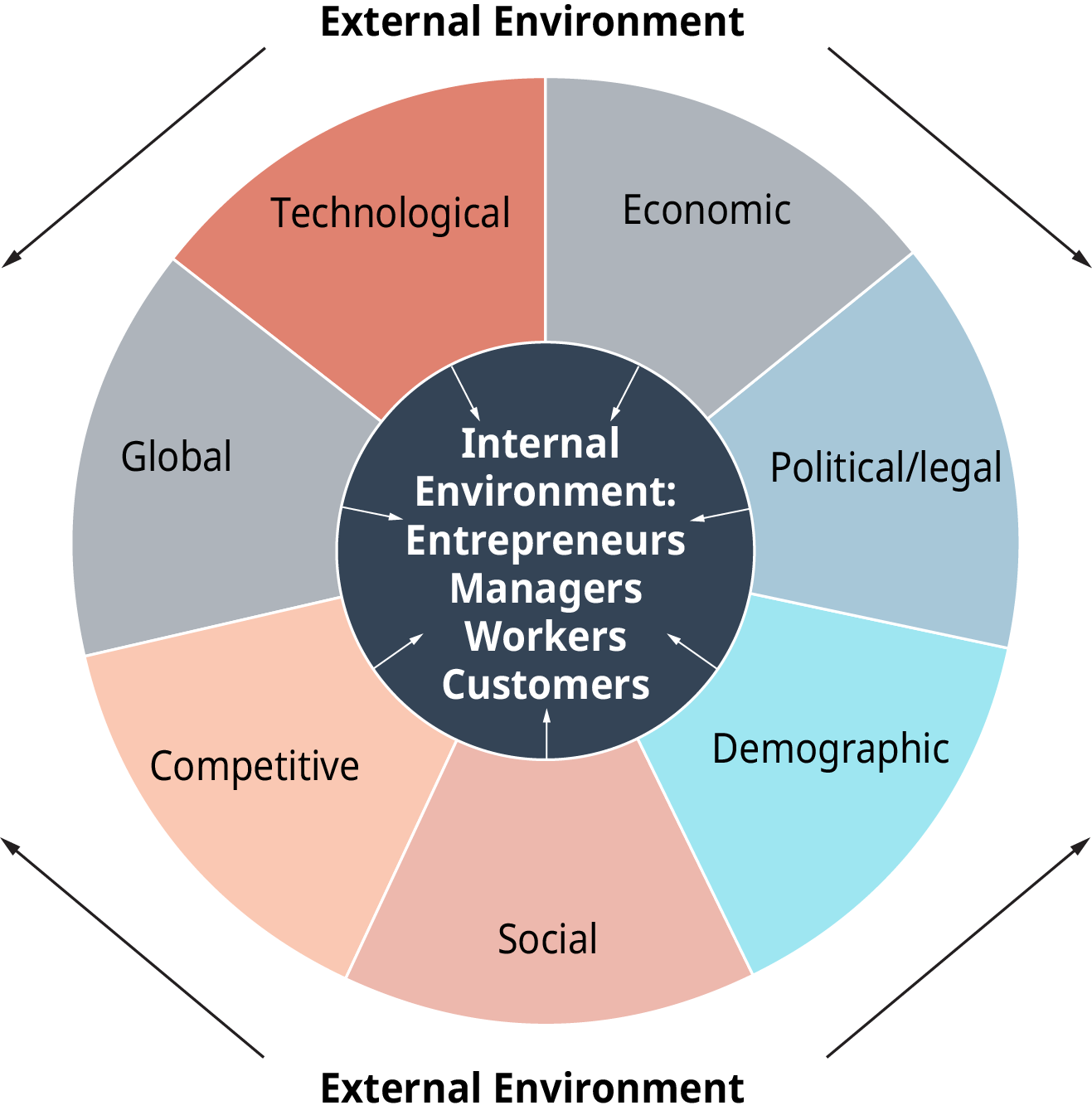Evaluating a company's competitive position involves assessing how well it is positioned within its industry and market compared to its competitors. This assessment includes analyzing both external and internal factors that influence the company's performance. Let's break down the process of evaluating a company's competitive position and its responses to shifts in the external and internal environments:
External Environment Analysis:

External environment analysis is a crucial process in evaluating a company's competitive position. It involves examining the external factors and forces that influence the company's operations, performance, and strategic decisions. Here are key components of an external environment analysis:

1. Industry Analysis:
Identify the industry in which the company operates and its key characteristics.
Assess industry growth rates, trends, and potential disruptors.
Analyze the competitive landscape by identifying major competitors, their market shares, and strategies.
2. Market Analysis:
Define the target market segments and their characteristics.
Analyze customer preferences, needs, buying behavior, and demographics.
Understand the company's market positioning and its ability to meet customer demands.
3. PESTEL Analysis:
PESTEL Analysis evaluates the Political, Economic, Social, Technological, Environmental, and Legal factors affecting the industry and company.
Understand how each factor can impact the company's operations and strategic decisions.
4. Porter's Five Forces Analysis:
Assess the intensity of competition within the industry. The Porter's Five Forces Analysis help in Analyzing the bargaining power of suppliers and buyers, the threat of substitutes, and the threat of new entrants.
Understand the competitive dynamics that shape the industry's profitability.
5. Competitive Intelligence:
Gather information about competitors' strategies, strengths, weaknesses, and market positioning.
Understand how competitors' actions might impact the company's competitive advantage.
6. Market Trends and Disruptive Forces:
Identify emerging trends, technologies, and shifts in consumer behaviour.
Assess the potential impact of disruptive forces on the industry and the company's business model.
7. Regulatory and Legal Environment:
Understand the regulatory framework governing the industry.
Assess the impact of regulatory changes and compliance requirements on the company's operations.

8. Economic Factors:
Analyse macroeconomic conditions, such as GDP growth, inflation, and interest rates.
Understand how economic factors can influence consumer spending and industry performance.
9. Social and Cultural Factors:
Examine societal and cultural trends that affect consumer preferences and behaviours.
Consider how changing social norms impact the demand for the company's products or services.
10. Technological Factors:
Evaluate technological advancements that can influence the industry and the company's operations.
Consider how the company leverages technology to gain a competitive edge.
11. Environmental and Sustainability Factors:
Assess the company's approach to environmental sustainability and its alignment with consumer preferences.
Understand how environmental concerns can impact industry regulations and market perception.
12. Global Factors and International Markets:
Consider the company's exposure to international markets and geopolitical risks.
Analyze opportunities and challenges presented by global expansion.
13. Customer and Stakeholder Analysis:
Understand the needs, preferences, and expectations of customers and other stakeholders.
Assess how the company engages with its stakeholders to build positive relationships.
An external environment analysis provides valuable insights into the opportunities and threats facing a company in its industry. By understanding the external forces that shape the business environment, the company can make informed strategic decisions to capitalize on its strengths and address potential challenges.
Internal Environment Analysis:

Internal environment analysis involves assessing the internal factors and resources that influence a company's operations, capabilities, and overall performance. This analysis provides insights into the company's strengths and weaknesses, helping to shape its strategies and decisions. Here are key components of an internal environment analysis:

1. SWOT Analysis:
SWOT analysis identifies the company's Strengths, Weaknesses, Opportunities, and Threats.
Strengths and weaknesses are internal factors, while opportunities and threats are external factors.
Consider the company's unique competencies, resources, and areas for improvement.
2. Resources and Capabilities:
Evaluate the company's tangible and intangible resources, such as financial assets, intellectual property, and human capital.
Assess the company's core competencies and distinctive capabilities that provide a competitive advantage.
3. Value Chain Analysis:
Analyze the company's value chain, which includes the sequence of activities that create value for customers.
Identify areas where the company excels in terms of efficiency, quality, and innovation.
4. Financial Analysis:
Review the company's financial statements, including the balance sheet, income statement, and cash flow statement.
Evaluate financial ratios to assess profitability, liquidity, solvency, and efficiency.
5. Organizational Culture and Structure:
Understand the company's organizational culture, values, and norms.
Assess how the company's culture aligns with its strategic objectives.
Evaluate the company's organizational structure in terms of hierarchy, communication, and decision-making.
6. Human Resources and Talent Management:
Evaluate the quality and skill set of the company's workforce.
Analyze the company's recruitment, training, and retention strategies.
Consider the alignment between employee skills and the company's strategic goals.
7. Innovation and R&D Capabilities:
Assess the company's commitment to innovation and research and development (R&D).
Analyze the company's track record of introducing new products, services, or processes to the market.
8. Marketing and Branding Strategies:
Evaluate the company's marketing efforts, including its brand positioning, messaging, and customer engagement.
Assess the effectiveness of the company's marketing channels and campaigns.
9. Operational Efficiency and Process Optimization:
Analyze the company's operational processes to identify areas for improvement and efficiency gains.
Evaluate the company's approach to supply chain management and cost control.
10. Customer Relationships and Satisfaction:
Understand the company's approach to building and maintaining customer relationships.
Analyze customer feedback and satisfaction levels.
11. Risk Management and Compliance:
Evaluate the company's risk management practices, including its approach to identifying and mitigating risks.
Consider the company's compliance with industry regulations and ethical standards.
12. Performance Metrics and KPIs:
Identify key performance indicators (KPIs) that measure the company's progress toward its goals.
Assess how well the company tracks and uses these metrics to drive performance.
13. Strategic Alliances and Partnerships:
Analyze the company's collaborations with other organizations to enhance its capabilities or market reach. Evaluate the impact of strategic alliances on the company's competitiveness.
An internal environment analysis provides insights into a company's core strengths and areas for improvement. By understanding its internal resources, capabilities, and limitations, the company can develop strategies that leverage its strengths while addressing its weaknesses. This analysis guides decision-making and helps the company align its internal factors with external opportunities and threats.

